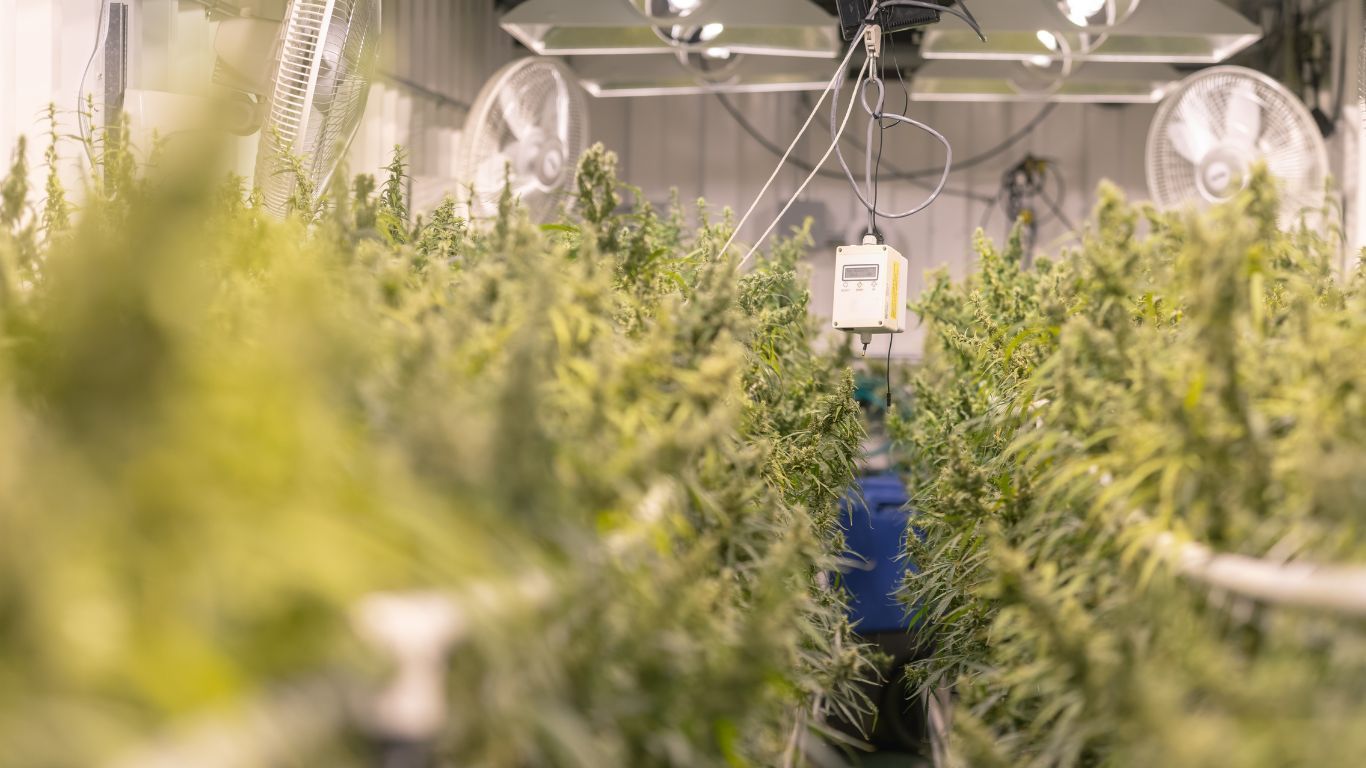
Health Canada announces a reprioritization of resources to higher risk areas and reduced regulatory burden for low risk changes to licensed sites.
Health Canada announced several new changes for federal cannabis licence holders today via an internal memo sent to licence holders. The change includes what they call a “reprioritization” of resources to what they consider higher risk areas and lowered regulatory hurdles for “low risk changes” to licensed sites.
These changes include allowing new licence holders to no longer submit for review some changes to site activity, and changes to how new products are approved for sale.
First, the memo says that, effective immediately, federal cannabis licence holders are no longer required to submit an amendment for review and approval by Health Canada for the addition of any new operation areas within an approved building that already appears on a licence; and changing an operations area, such as changes to cameras, locks, or layout, within an approved building that already appears on a licence.
However, approval from Health Canada’s cannabis branch is still required for any changes to site perimeter, and adding new buildings where activities with cannabis will occur such as adding or changing a new storage or growing area. An amendment application is still required for the following site plan changes.
This change applies to all operation areas of a licenced site, other than the storage area, where cannabis is present. This includes rooms for indoor growing, milling, drying, curing, packaging, labeling, testing, etc. This does not include outdoor grow areas.
What this means is that federal licence holders are no longer required to provide new information, including updates to the Cannabis Tracking and Licensing System (CTLS), as long as the changes are occurring in an already-approved building.
The memo does list one exception to this if the modifications include changes to the licence holder’s Organizational Security Plan. Any changes to the OPS will require notification by email to Health Canada within five days of making the changes.
Secondly, the changes address the requirement for notices of new cannabis products. Federal licence holders for cannabis who wish to sell new products into the supply stream are required to provide the Minister with a written notice at least sixty days before making a new cannabis product available for sale (other than seeds or live plants).
Starting immediately, only one new Notice of New Cannabis Products will be required for dried or fresh cannabis, regardless of container size. However, the new notice must include all container sizes the licence holder intends to use for each product. In addition, if a licence holder has already submitted their NNCP for a product that they sell to another licence holder, that Notice will also apply to that product, rather than requiring new Notice, as was previously required.
Lastly, Health Canada also notes that NNCPs can be sent before a product is packaged and labelled, and that licence holders can send their NNCP prior to receiving their sales amendment.
The full memo is available below:
Health Canada continually reviews its regulatory programs with a view of implementing process improvements that align with risks to public health and public safety, and reduce regulatory burden on regulated parties.
In that context, Health Canada is advising you of the following permanent changes, effective immediately. The relevant online guidance will be updated accordingly in the near future to reflect these changes.
Changes to site plan approval requirements
The process improvements outlined below build on changes Health Canada has made to the licensing process over the years and stem from an assessment of our review processes and the results from inspections of licensed cannabis sites. Inspection results to date demonstrate an overall high rate of compliance with the Cannabis Regulations, and support a reprioritization of resources to higher risk areas and reduced regulatory burden for low risk changes to licensed sites. Other considerations in this assessment included:
· The physical security model relies most heavily on the perimeter, to control general access to a site with cannabis, and the security of storage areas, to control and protect the highest value cannabis on the site. In addition, new buildings usually represent a significant change to the site, including the application of security features and changes to the flow of cannabis on the site.
· This approach aligns more closely with other Health Canada site licensing programs.
Effective immediately, licence holders are no longer required to submit an amendment for review and approval by Health Canada for the following site plan changes:
· Adding a new operations area (see definition below) within an approved building that already appears on your licence; and
· Changing an operations area (e.g., change to cameras, locks, layout) within an approved building that already appears on your licence.
For the purpose of this approach, operations area means an area of the site — other than a storage area— where cannabis is present as a result of any activities conducted under a licence (e.g., rooms dedicated to indoor growing, milling, drying, packaging, labelling, testing, etc.). This only applies to operations areas located in a building authorized for the possession of cannabis, and includes all indoor grow areas but excludes outdoor grow areas.
This means there is no longer a requirement to submit any information (including updating “rooms” in CTLS) to Health Canada for these types of site plan changes, as long as they are within an approved building that already appears on your licence. The only exception to this is if these changes result in a change to your Organizational Security Plan (OSP). If you change the OSP, you need to notify Health Canada by email within 5 days of making the change. Refer to the Cannabis Licence Management Guide: Cultivation, Processing and Sale for Medical Purposes for more details.
Approval from Health Canada through an amendment application is still required for the following site plan changes:
· Changing a site perimeter, or physical barrier surrounding the site;
· Adding a new building (where activities with cannabis will take place and will be required to be authorized on your licence);
· Adding or changing a storage area; and
· Adding or changing an outdoor grow area.
Refer to the attached table for the summary of the changes and their submission requirements.
Should you currently have an amendment application in queue with Health Canada for one of the site plan changes that no longer requires approval, you can immediately begin to use these operations areas provided that the areas meet the applicable requirements of the Cannabis Regulations prior to their use, and you make an up-to-date site plan available upon request.
Additionally, if your amendment application has already been submitted in CTLS, please complete one of the following:
1. If the amendment is only for the addition or change of an operations area within an approved building that already appears on their licence: withdraw your amendment application in the Cannabis Tracking and Licensing System (CTLS) and send an email to: HC.licensing-cannabis-licences.SC@canada.ca indicating that you have done so. The withdrawal of your application in the CTLS is necessary to allow you to submit future amendment applications.
2. If the amendment includes a combination of different amendment types, such as the addition or change of an operations area within an approved building that already appears on their licence and another amendment request (that continues to require approval): leave your existing amendment application in the CTLS. Health Canada will continue its review of the applicable portion of your amendment application.
Notice of New Cannabis Products
As per subsection 244(1) of the Cannabis Regulations, a processing licence holder must provide the Minister with a written notice at least 60 days before making a new cannabis product available for sale (other than plant or seeds) that they have not previously sold.
In order to streamline this process, the following measures can now be operationalized by processing licence holders:
· For dried cannabis or fresh cannabis, only one Notice of New Cannabis Product (NNCP) shouldbe submitted to Health Canada to capture information about the various immediate containers sizes that will be made available for sale. The NNCP should include all the container sizes the licence holder intends to sell for the product; and
· Where one licence holder sells a cannabis product to another licence holder for which a NNPC was already submitted, the NNCP that has been already submitted is considered sufficient notice for the purpose of complying with subsection 244(1) of the Cannabis Regulations, as long as all elements of the cannabis product and its information and description is identical.
In addition to these two operational changes, based on how and when licence holders are currently submitting NNCPs, Health Canada would like to clarify two additional points:
· NNCPs can be sent prior to a product being packaged and labelled as long as information elements remain consistent with the final cannabis product; and
· Licence holders may send a NNCP to Health Canada prior to receiving approval of their sales amendment application. However, licence holders must have received authority to sell that class of cannabis products before making the product available for sale. The 60 day notification period must also have been met.











